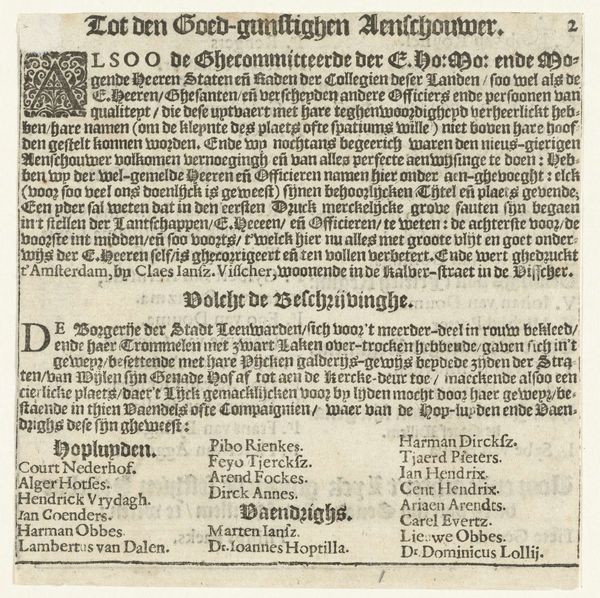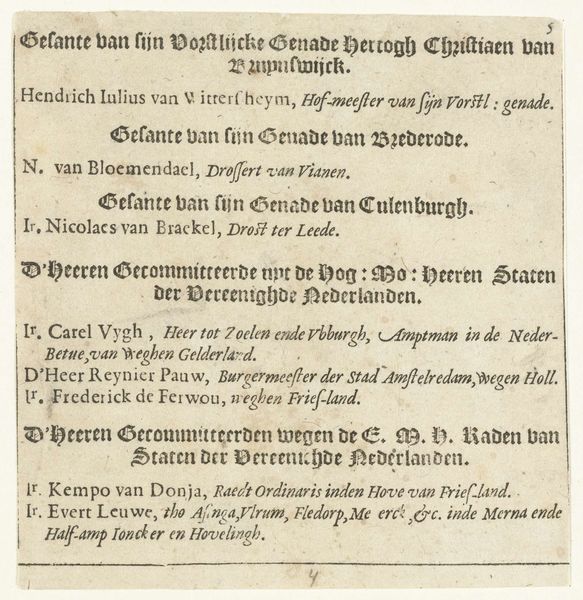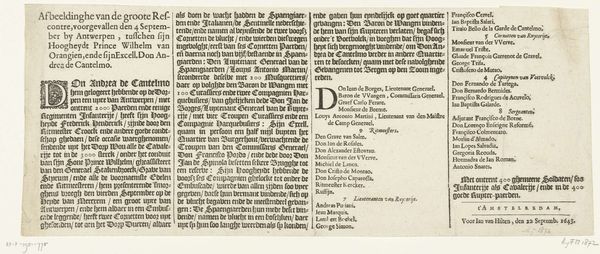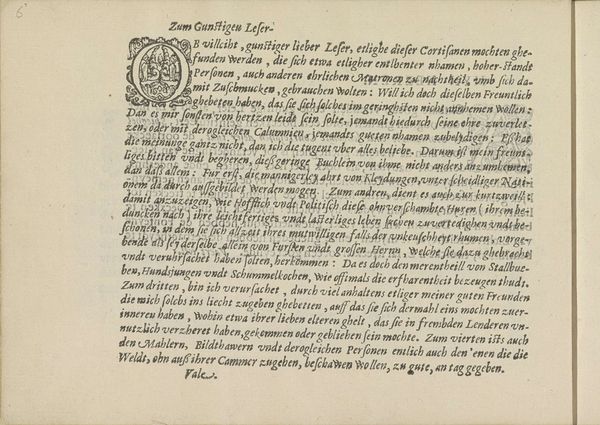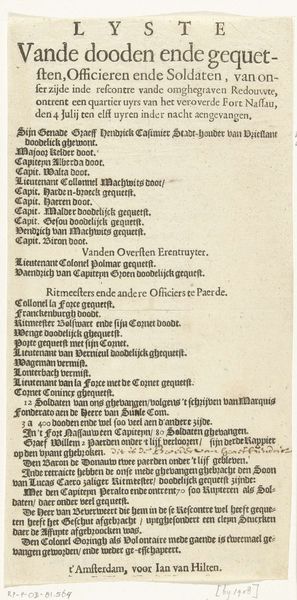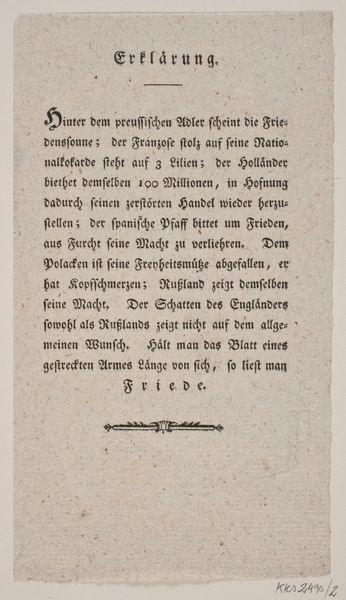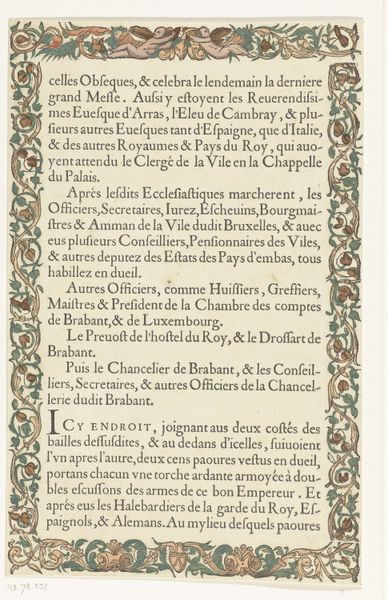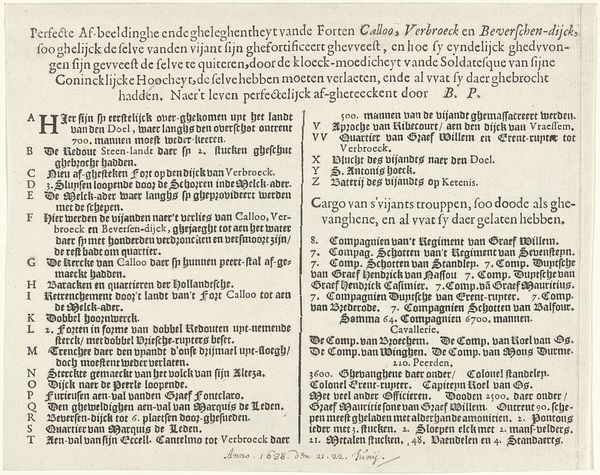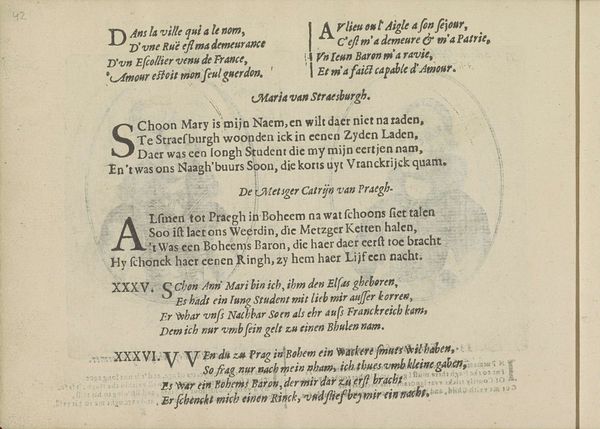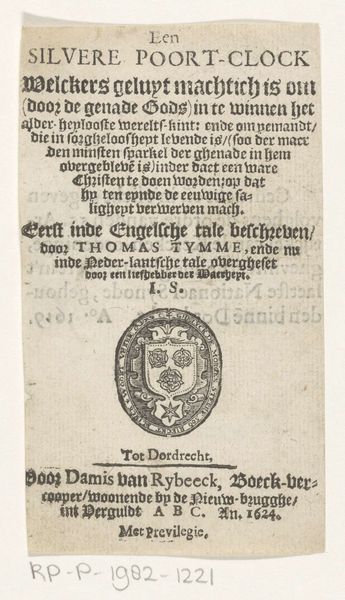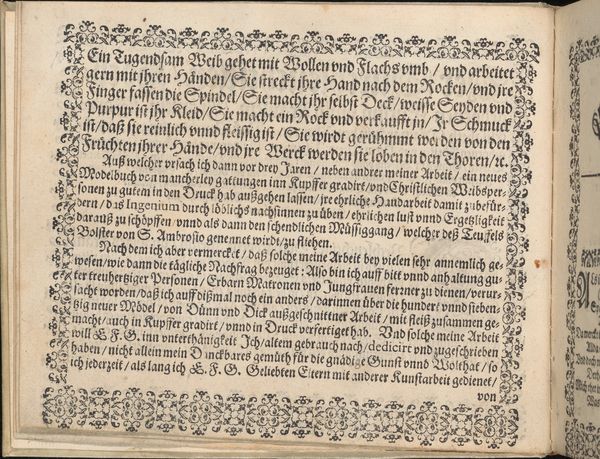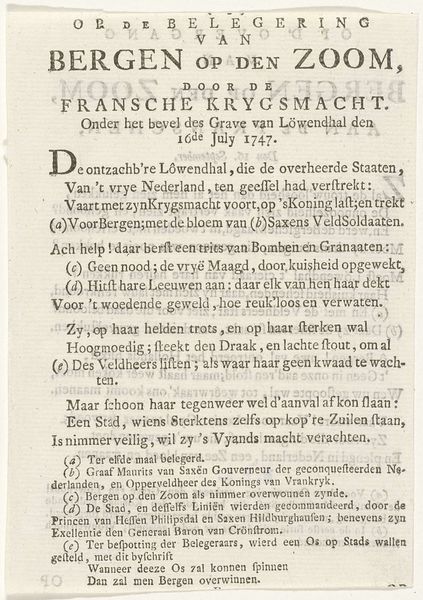
Tekstblad bij de begrafenis van Willem Lodewijk, graaf van Nassau, in de Grote Kerk te Leeuwarden, 1620 1620
0:00
0:00
graphic-art, print, paper, typography, engraving
#
graphic-art
#
aged paper
#
hand-lettering
#
dutch-golden-age
# print
#
old engraving style
#
hand drawn type
#
hand lettering
#
paper
#
paragraph style
#
typography
#
fading type
#
handwritten font
#
word imagery
#
engraving
#
columned text
Dimensions: height 116 mm, width 120 mm
Copyright: Rijks Museum: Open Domain
Editor: So, here we have a "Tekstblad bij de begrafenis van Willem Lodewijk, graaf van Nassau, in de Grote Kerk te Leeuwarden, 1620", or a Text Sheet for the funeral of William Louis, Count of Nassau in the Great Church at Leeuwarden in 1620, created by Claes Jansz. Visscher. It seems to be a printed announcement or a program. I am struck by its simplicity – just names, titles, and lists of attendees, really. What jumps out at you? Curator: Ah, simplicity, you say? To me, it whispers stories of a time obsessed with lineage and order! Look closely. This isn't *just* names. Each meticulously etched character on that aged paper announces someone's social standing, their importance in that frozen moment of grief and ceremony. Notice how the typography itself subtly denotes hierarchy – heavier fonts for those of greater import, perhaps? Editor: I hadn’t considered that. It just looked like old-fashioned printing to me. So the typography becomes part of the message itself? Curator: Exactly! Think of it as a visual score for the funeral. Each name, each title is a note carefully placed within the composition, dictating how this social symphony should sound. Consider, too, the context of the Dutch Golden Age – a burgeoning republic, meticulously constructing its identity. Funerals weren't just private grief, but also political theater. It really does capture so much for the era! What new questions does this raise for you? Editor: I wonder, were these lists common for such events? Like, were people collecting these as a record? Did the choice of names included reflect social battles going on at the time? Curator: Excellent questions! That's where historical documents can assist in deciphering more information! You begin to unravel a fascinating history behind even seemingly simple printed texts. Editor: Well, that definitely gives me a new perspective on historical graphic art. I learned a lot just from considering who's included on the text. Thank you for illuminating this art with its cultural significance.
Comments
No comments
Be the first to comment and join the conversation on the ultimate creative platform.
